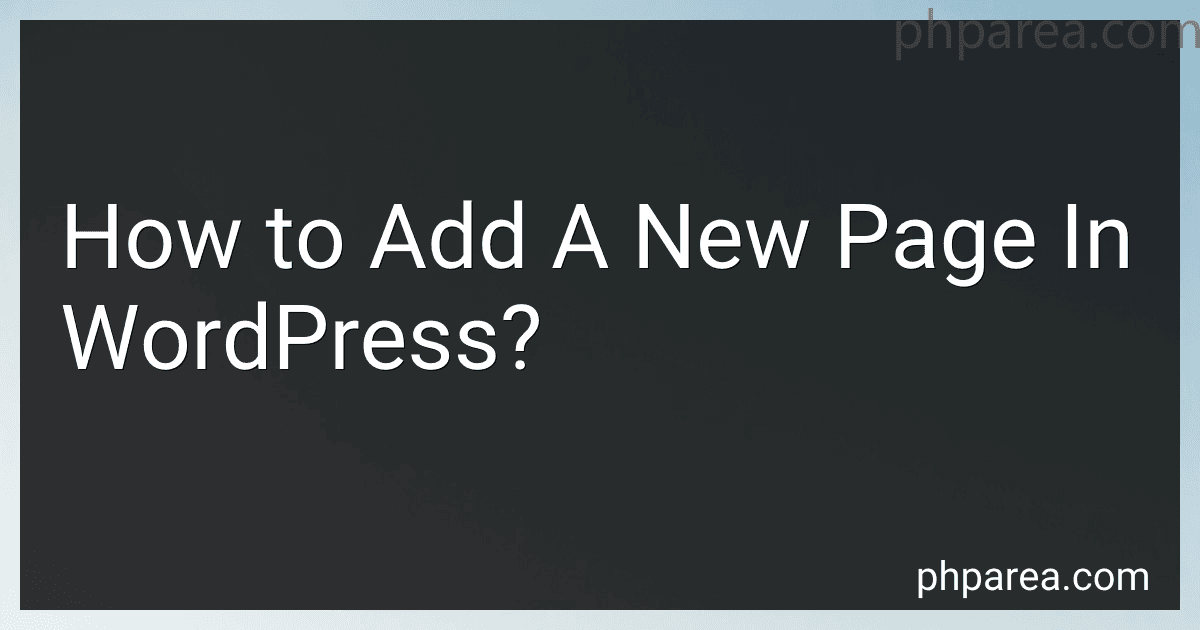Best WordPress Plugins to Buy in December 2025
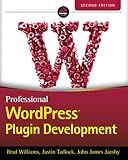
Professional WordPress Plugin Development, 2nd Edition


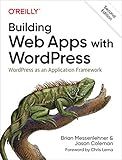
Building Web Apps with WordPress: WordPress as an Application Framework


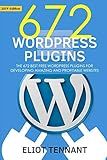
WordPress Plugins: The 672 Best Free WordPress Plugins for Developing Amazing and Profitable Websites


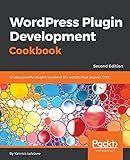
WordPress Plugin Development Cookbook: Create powerful plugins to extend the world's most popular CMS, 2nd Edition


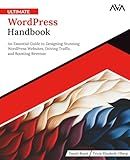
Ultimate WordPress Handbook: An Essential Guide to Designing Stunning WordPress Websites, Driving Traffic, and Boosting Revenue (English Edition)


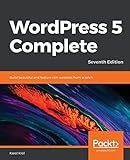
WordPress 5 Complete: Build beautiful and feature-rich websites from scratch, 7th Edition


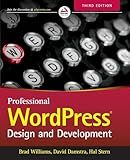
Professional WordPress: Design and Development



The Ultimate WordPress & WooCommerce Handbook: From Setup to Success in Online Selling


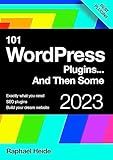
101 WordPress Plugins… and Then Some : Build your dream website 2023


To add a new page in WordPress, follow these steps:
- Log in to your WordPress admin dashboard. Enter your credentials and click on the "Login" button.
- After logging in, you will be redirected to the WordPress admin panel.
- On the left-hand side of the panel, you will find the navigation menu. Locate and click on "Pages". This will expand the menu options for pages.
- From the expanded menu, click on "Add New". You will be redirected to the page editing screen.
- On the page editing screen, you will find two primary areas: the title field and the content editor.
- In the title field, enter the desired title for your new page. This will be displayed as the main heading of the page.
- In the content editor, you can enter the content for your new page. This can include text, images, videos, and other media elements. You can format the content using the provided tools similar to a word processor.
- Additionally, you can use the toolbar buttons to add media, insert links, apply formatting, and more.
- Customize the page further by selecting page attributes, templates, and other settings from the right-hand sidebar. These options might vary depending on the theme or plugins installed on your WordPress site.
- Once you are done, click on the "Publish" button to make the page live on your website. You can also choose to save the page as a draft for future edits.
- To view your newly added page, you can click on the "View Page" link that appears after publishing or use the website's navigation menu to locate the page.
That's it! You have successfully added a new page to your WordPress website.
How to add categories to a new WordPress page?
To add categories to a new WordPress page, follow these steps:
- Login to your WordPress admin dashboard.
- Go to "Pages" and click on "Add New" to create a new page.
- On the right side of the editor, you will see a section called "Document" where you can find various options.
- In the "Categories" section, you can either select an existing category or create a new one by clicking on the "+ Add New Category" link.
- If you want to create a new category, a box will appear where you can enter the name of the category and also choose its parent category (if applicable).
- After selecting the category or creating a new one, click on the "Publish" button to save and publish your new page.
By adding categories to your pages, you can better organize and group related content together on your WordPress website.
What is the process of hiding a page from search engine results in WordPress?
To hide a page from search engine results in WordPress, you can follow these steps:
- Log in to your WordPress admin dashboard.
- Go to the "Pages" section and select the page you want to hide.
- Edit the page by clicking on it.
- Scroll down to find the "Yoast SEO" or "All in One SEO Pack" box (assuming you have installed either of these popular SEO plugins).
- Within that box, you will find a section called "Search Engine Optimization" or something similar.
- Look for the option labeled "Allow search engines to show this Page in search results" or "Index this Page." By default, it should be checked.
- Uncheck the box or toggle the switch to disable search engine indexing for that specific page.
- Save the changes by clicking the "Update" or "Publish" button.
After performing these steps, search engines will not include that particular page in their search results. However, note that this method only prevents search engines from indexing the page; it does not necessarily make it completely invisible. Direct links to the page may still work, and other websites might even still link to and display the page in search results or other places.
How to preview a new page before publishing it in WordPress?
To preview a new page before publishing it in WordPress, follow these steps:
- Log in to your WordPress dashboard.
- Navigate to Pages > Add New to create a new page or select an existing page to edit.
- Enter the page title and content as desired.
- Before publishing the page, click on the "Preview" button located in the top right corner of the page editor. This will open a new tab showing a live preview of the page.
- Review the previewed page to ensure that it appears as intended, checking for any formatting issues, broken links, or other errors.
- If any modifications are necessary, return to the page editor by closing the preview tab or clicking the "Edit" button on the top toolbar of the preview tab.
- Make the required changes in the page editor and click the "Preview" button again to recheck the modifications.
- Repeat the process of previewing, editing, and previewing until you are satisfied with the page.
- Once you are happy with the previewed page, you can publish it by clicking the "Publish" button located next to the "Preview" button.
By previewing the page before publishing, you can make sure it looks and functions as desired, allowing you to catch any mistakes or make any necessary edits before the page is made live on your website.
How to access the page editor in WordPress?
To access the page editor in WordPress, follow these steps:
- Login to your WordPress admin dashboard by going to www.yourwebsite.com/wp-admin.
- Enter your username and password.
- Once logged in, you will be taken to the WordPress admin dashboard.
- On the left-hand side menu, locate and click on "Pages".
- A dropdown menu will appear, click on "All Pages".
- You will be presented with a list of all the pages on your WordPress website.
- Select the page you want to edit by clicking on its title.
- The page editor will open, where you can make changes to the content, add images, videos, and customize the page layout.
- After making your desired changes, click on the "Update" or "Publish" button to save the changes and make them live on your website.
Note: The steps may vary slightly depending on the version and theme of WordPress you are using, but the general process should be the same.
What is the procedure for disabling comments on a new page in WordPress?
To disable comments on a new page in WordPress, you can follow these steps:
- Login to your WordPress backend/admin panel.
- Navigate to "Pages" and click on "Add New" to create a new page or open an existing page for editing.
- In the page editor, locate the "Document" settings panel on the right-hand side.
- Expand the "Discussion" section within the "Document" settings.
- Uncheck the box that says "Allow comments" to disable comments on this specific page.
- If you want to disable comments globally for all new pages, you can go to "Settings" and click on "Discussion".
- Within the "Discussion Settings" page, uncheck the option that says "Allow people to submit comments on new posts", which will disable comments for all new pages.
Remember, these steps may vary slightly depending on the version of WordPress you are using and the theme or plugins installed.
What is the procedure for adding images to a new page in WordPress?
To add images to a new page in WordPress, you can follow these steps:
- Log in to your WordPress dashboard.
- Go to the Pages section and click on "Add New" to create a new page or access an existing page to edit.
- Once you are in the page editor, place your cursor at the position where you want to insert the image.
- Click on the "Add media" button located above the content editor.
- An Insert Media window will appear. Here you have three options: Upload Files: If the image is not already in your media library, you can click this button to upload the image from your computer. Media Library: If the image is already in your media library, you can choose it from here. Insert from URL: If the image is hosted on another website, you can add its direct URL to display it on your page.
- Select the desired image or upload a new one.
- Once the image is selected, you can add a title, alt text, caption, description, and choose its alignment.
- You can also choose the image size by clicking on the "Edit Image" button or leave it as default.
- After configuring the image settings, click on the "Insert into page" button.
- The image will be added to your page at the cursor position.
- Remember to click on the "Update" or "Publish" button to save your changes to the page.
That's it! You have successfully added an image to your WordPress page.
What are the available options for page layouts in WordPress?
In WordPress, there are several options for page layouts, depending on the theme and plugins used. Here are some common page layout options:
- Default Layout: Many themes provide a default layout where the content is displayed in a single column from top to bottom.
- Two-Column Layout: This layout divides the content into two columns, typically with the main content on one side and a sidebar on the other. The sidebar can be used for additional navigation, widgets, or advertisements.
- Three-Column Layout: Similar to a two-column layout, but with an additional sidebar column. This layout is commonly used in magazine-style themes where you can have multiple sidebars with different widgets.
- Full-Width Layout: In this layout, the content stretches across the entire width of the page, without any sidebars. It provides a spacious and clean look, often used for landing pages or portfolios.
- Grid Layout: Grid layouts organize content in a grid-like format, with multiple sections or modules displayed side by side. This layout is particularly useful for showcasing portfolios, products, or blog posts.
- Masonry Layout: Similar to a grid layout, but with unevenly sized and positioned tiles or modules. This layout creates a dynamic and visually appealing display, suitable for galleries or visual-heavy websites.
- Customizable Layouts: Many premium themes or page builder plugins offer drag-and-drop functionality, allowing you to create custom page layouts by adding and arranging various elements, such as columns, images, text blocks, sliders, etc.
These are just a few examples, and the actual options may vary depending on the theme or page builder you are using.
